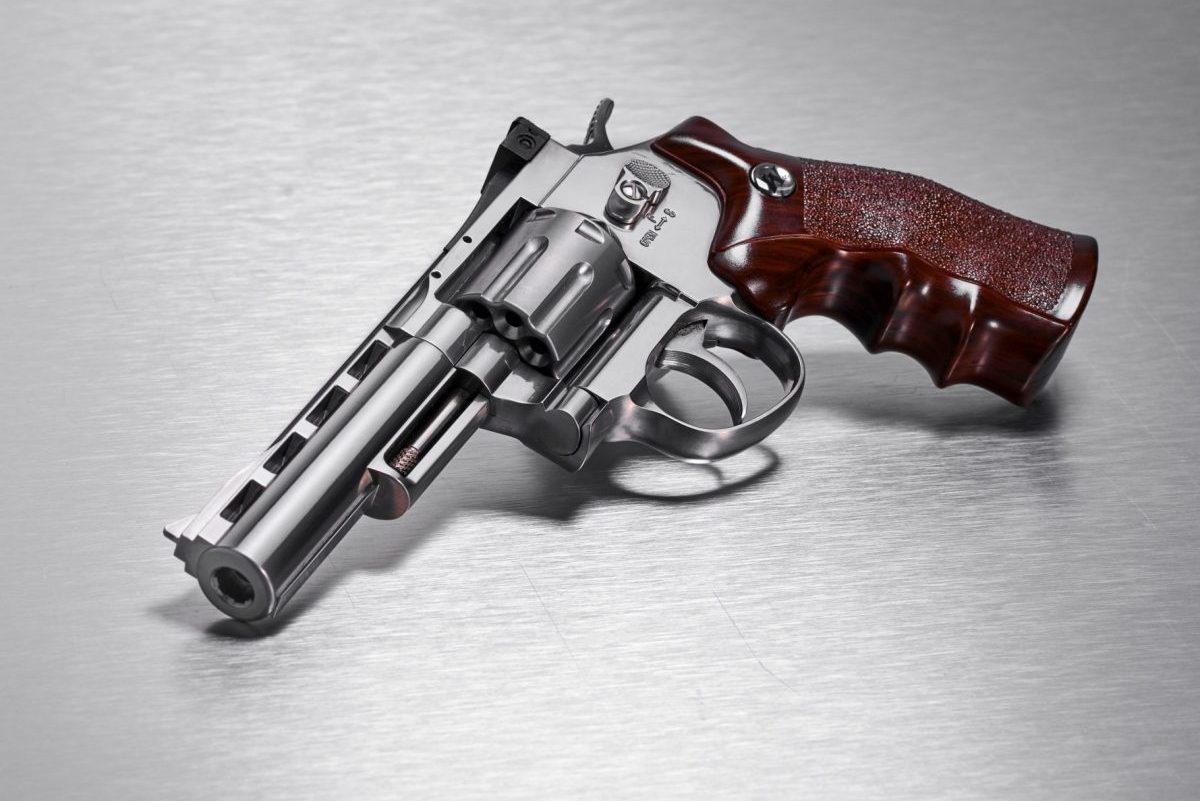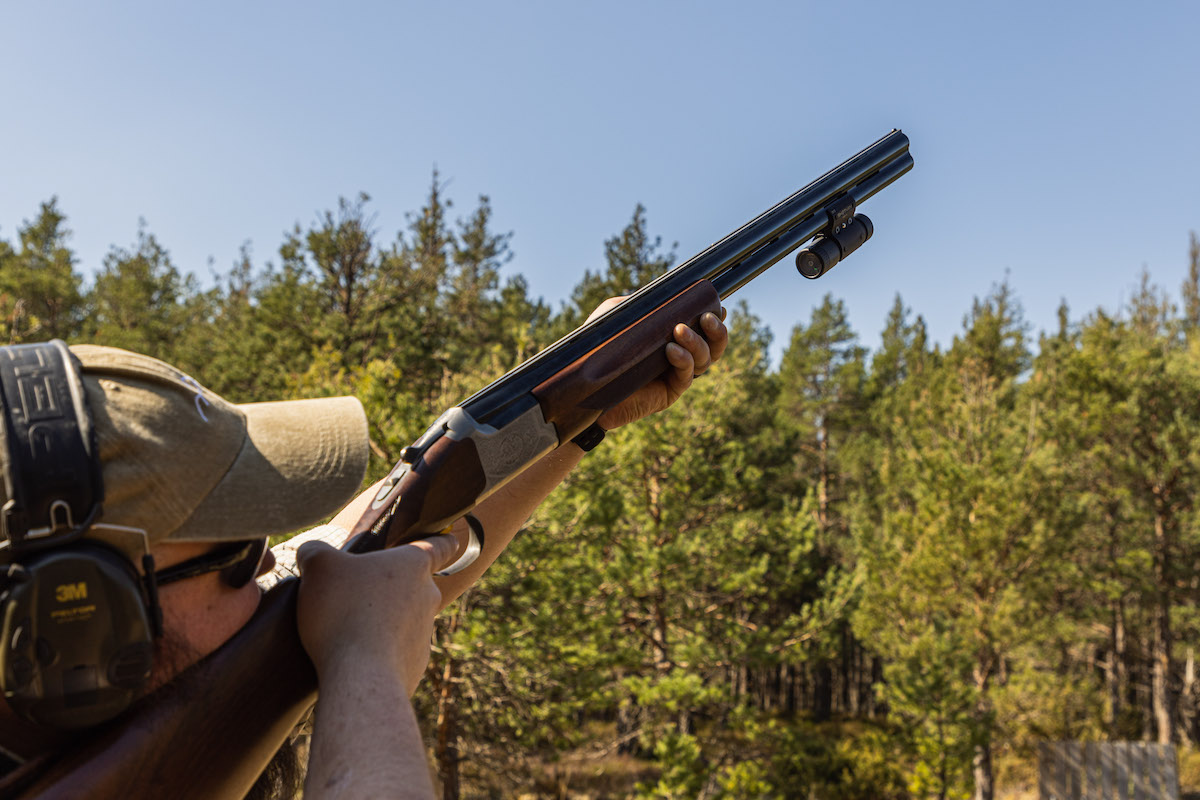Winchester 4.5 Special
Mike Morton picks up the Winchester 4.5 Special – a pellet-firing revolver with a rifled barrel – to find out if it really is all that special.

Winchester 4.5 Special
Like many of you, I love shooting BB-firing blowbacks, but there’s a place in my heart for CO2-powered revolvers, and that place only gets bigger when I find out that they shoot .177 (4.5mm) pellets from a rifled barrel, rather than ball bearings from a smoothbore.
Enter the Winchester 4.5 Special, a meaty handgun inspired by the old school stainless steel revolvers of the 1960s, 70s and 80s. Winchester is a company that’s best known for its lever-action repeating rifles, although it did make a few handguns, including an odd single-shot bolt-action pistol and a few revolver prototypes.
Nevertheless, the gun we have here is not based on any Winchester design, but instead more closely resembles the Smith & Wesson Model 625, which is chambered in .45 ACP (Automatic Colt Pistol). The Model 625 is a handsome gun – and so is the 4.5 Special.
Winchester 4.5 Special – specifications
Gun supplied by: BSA Guns (www.bsaguns.co.uk)
Model: Winchester 4.5 Special
Price: £139
Calibre: 4.5mm (.177)
Ammo Type: Pellet
Magazine: Rotary
Capacity: Eight rounds
Sights: Open (fixed front, adjustable rear)
Safety: Manual
Barrel: Rifled
Action: Single and double
Powerplant: 12g CO2 capsule
This Winchester is of all-metal construction apart from the plastic grips, and the frame and cylinder have been given a beautiful polished finish, giving it quite a luxurious look and feel, especially considering its relatively modest price tag of £139. A couple of areas are a little less premium though, notably the hammer, which is a metal casting that has a visible seam running down the middle, and the plastic grips.
The grips are a bit of an odd choice, as they’ve been given a wood grain effect, while they look very similar to the rubberised grips that are made by Pachmayr, and so could easily have been supplied in dark grey or black, with no need to go for the fake wood look.
This handgun represents the conventional style of revolver on which it’s based, where the cylinder swings out from the frame for loading, unloading and cleaning. The pellet-firing 4.5 Special uses an eight-shot rotary magazine that slots into the rear of the cylinder.
The magazine is even ejected from the cylinder with an extractor, much like the one on a powder-burner that ejects spent cases. The mag itself is quite deep, and can only be loaded into the cylinder the right way.
Little pellet indicator icons on the face of the magazine let you know from which side the pellets should be inserted. The instructions correctly remind you to thumb each pellet fully home, as the cylinder may not close properly otherwise. I tried a few different types of pellet, and all were quite a tight fit in the magazine, so be prepared to put that thumb to good use, although accuracy did not seem to be adversely affected at all.

The grips have a moulded stippling effect for extra purchase, but are quite shiny and don’t quite pull off the wood effect as well as they might.

The magazine is deep enough to use regular pellets as well as match-style flatheads, so there’s plenty of scope for pellet testing

One nice touch is the use of a captive piercing screw to release the CO2 that is completely hidden when the grips are snapped back into place.
Being an all-metal handgun, the 4.5 Special is a weighty beast, with its neutral point of balance being immediately in front of the trigger blade. When you actually take hold of the gun it does feel nose-heavy, but the shape and size of the grip do a good job of counterbalancing that weight, so it’s not as much of an effort to hold it in the aim as you might imagine.
Trigger-pull is a little bit heavy, at least on paper, coming in at 5lb 8oz when the gun is shot in single-action mode, and 8lb 1oz in double. But it’s always worth remembering the type of bullet-firing revolver on which this gun is based as well as the uses to which this airgun will be put. It’s not a 10M match pistol, it’s a fun gun, although it would certainly be able to hold its own in action air pistol-type competitions.
I pitted the 4.5 Special against a series of paper targets at six metres, using a variety of flathead and regular domed diabolo pellets, with the gun seeming to prefer JSB Exact. I was able to shoot tight eight-shot groups of around 17mm centre-to-centre with the gun rested and shot in single-action mode.
Shooting in double-action mode did see the group size open up a little, as is to be expected, but the trigger offered far more control than I was expecting.
Most of the effort is used to cock the gun and rotate the cylinder anti-clockwise to present the next chamber, and the gun even makes a clicking noise to let you know this is happening.
After this has been done, it only requires a little more finger pressure to send that round on its way, so with practice I was able to predict the point of shot release a bit better.

The grip is a single moulding that just needs to be pulled back and out the way in order to access the loading bay for the 12g CO2 capsule.
The sights are open, being a crisply machined U-shaped notch and post type, and the rear sight is adjustable for windage and elevation. Elevation was spot-on out of the box for both six and 10 metres, but as I’m a right-handed, left-eye-dominant shooter, I needed to adjust windage using a small flat-headed screwdriver, and found the sight to click positively with each adjustment. Many guns of this type offer no adjustment whatsoever, so the ability to tweak the sights to your liking is a definite plus point for the Winchester.
Shooting at 10 metres saw me take on my favourite rabbit and pigeon double-headed spinner, with the rabbit’s head being easy enough to hit when I was shooting standing, using either a one- or two-handed grip, while the pigeon’s head was a bit more elusive.
It’s easy to get carried away when shooting at reactive targets, but
it’s always a good idea to keep a mental note of how many shots you’ve taken. Forty shots – five magazines’ worth of pellets – was pretty much the limit with the 4.5 Special.
For an unmoderated handgun, the 4.5 Special is a fairly quiet garden gun, but it still manages to give you an audible warning when the CO2 is getting too low.
The Winchester 4.5 Special is a lovely looking revolver that’s easy to shoot despite its size and weight. And for the money, I reckon it’s a bit of a bargain.









